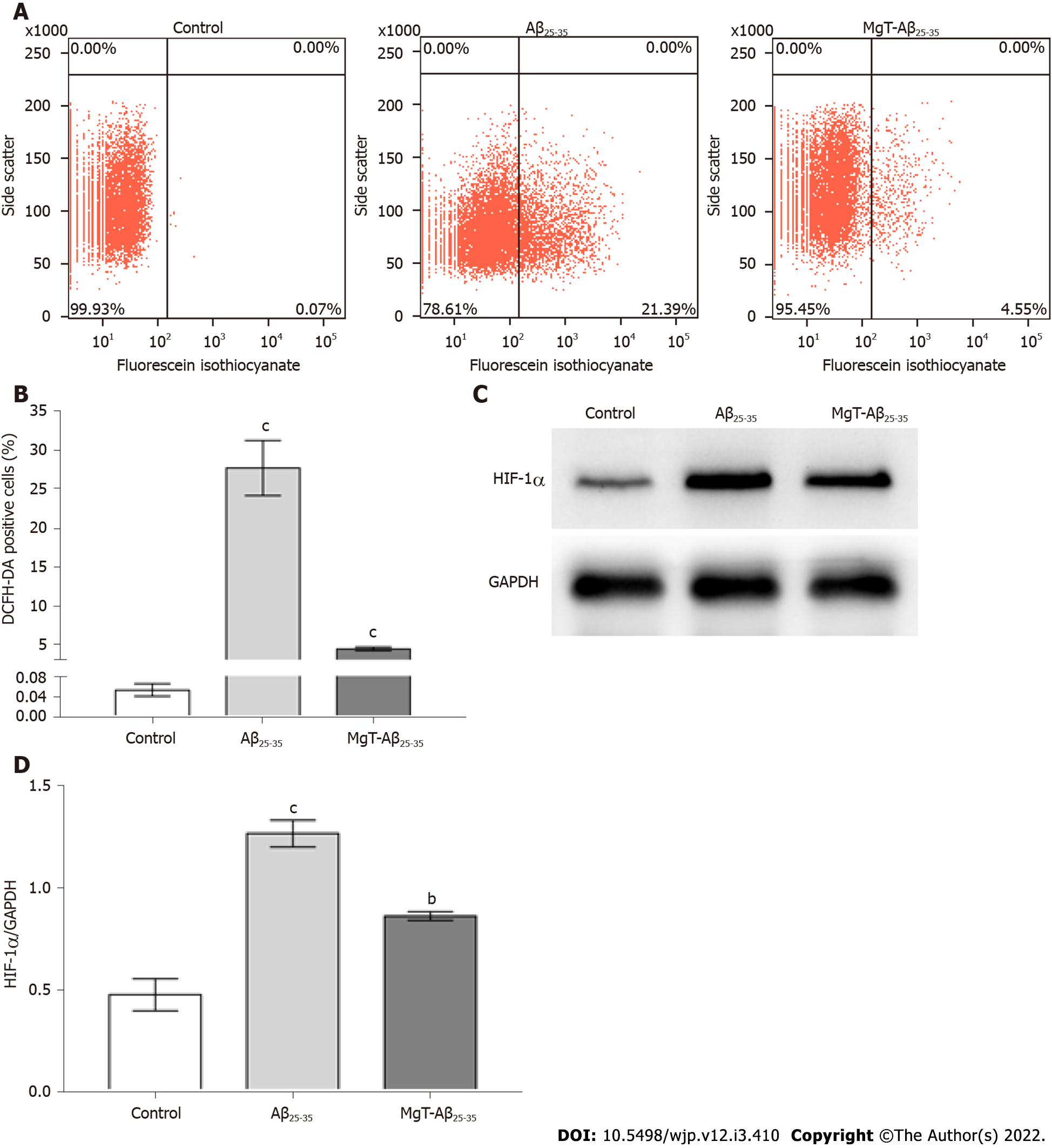Copyright
©The Author(s) 2022.
World J Psychiatry. Mar 19, 2022; 12(3): 410-424
Published online Mar 19, 2022. doi: 10.5498/wjp.v12.i3.410
Published online Mar 19, 2022. doi: 10.5498/wjp.v12.i3.410
Figure 2 Magnesium-L-threonate treatment suppressed the elevated reactive oxygen species level and hypoxia-inducible factor-1α protein expression in the amyloid β25-35-exposed HT22 cells.
A, B: The percentages of dichloro-dihydro-fluorescein diacetate positive cells of each group; C: Protein band images of hypoxia-inducible factor (HIF)-1α and glyceraldehyde-3-phosphate dehydrogenase of each group; D: The HIF-1α protein expression level of each group. n = 3. aP < 0.05, bP < 0.01, cP < 0.001 vs former group. Aβ: Amyloid β; MgT: Magnesium-L-threonate; HIF: hypoxia-inducible factor; DCFH-DA: dichloro-dihydro-fluorescein diacetate; GAPDH: glyceraldehyde-3-phosphate dehydrogenase.
- Citation: Xiong Y, Ruan YT, Zhao J, Yang YW, Chen LP, Mai YR, Yu Q, Cao ZY, Liu FF, Liao W, Liu J. Magnesium-L-threonate exhibited a neuroprotective effect against oxidative stress damage in HT22 cells and Alzheimer’s disease mouse model. World J Psychiatry 2022; 12(3): 410-424
- URL: https://www.wjgnet.com/2220-3206/full/v12/i3/410.htm
- DOI: https://dx.doi.org/10.5498/wjp.v12.i3.410









